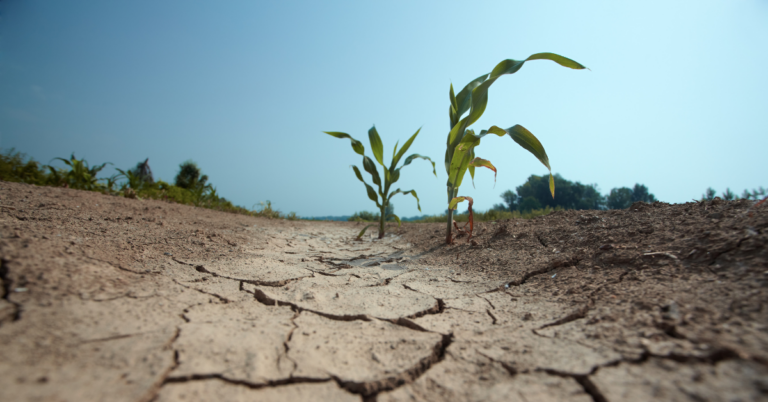By Jen Schumann | Contributor, Rocky Mountain Voice
Water is essential. Everyone needs it, from cities to farms, but how it is managed can be quite a puzzle.
As water scarcity and climate challenges grow, Colorado leaders gathered at the recent Colorado Water Roundtable Event to discuss the future of water management.
With the 2007 Interim Guidelines expiring in 2026, stakeholders are seeking solutions to protect the state’s water. These include agricultural, municipal, environmental and tribal groups.
Merging current demands with future planning
Andy Mueller, general manager of the Colorado River District, stressed the need for long-term planning. It is urgent.
“Media in the lower basin states often claim they’re alone in seeking solutions to water demands and drought. Not true. Stakeholders in the upper basin are actively involved in water conservation efforts. They are doing their best to live within the means of the river,” said Mueller.
He added, “Can we dry up agriculture to support cities? There’s a whole lot of value and judgment in those statements. Is life in [Los Angeles] more important than life in Hotchkiss, Colorado?”
Mueller also warned of legal risks with the Colorado River Compact. If the Upper Basin states fail to deliver 82.5 million acre-feet, the Lower Basin states could sue.
“We all need to understand that risk as we make plans for the future,” he said.
Russ Schumacher, Colorado’s state climatologist, said this summer was one of the wettest in recent memory. But, the long-term trend is troubling.
“Streamflows have dropped by 25% in July and August since 2000,” Schumacher said. He added that this decline risks future droughts, heatwaves and wildfires.
Agricultural concerns and economic impact
Marc Catlin, a Western Slope farmer and state representative, expressed the agricultural community’s concerns about the ongoing water shortages.
“If we don’t plant the crop, then that economic activity doesn’t go to Main Street,” Catlin explained, referring to the broader economic impact of reduced water availability on farming communities. He also discussed natural curtailment, where the entire community shares the burden of water scarcity. “From the upper end of the valley to the lower end, everybody shares in that shortage,” Catlin said.
As the talk turned to food security, Dan Keppen, Exec. Dir. of the Family Farm Alliance, stressed the need to maintain water for farming.
“We’re the only country in the world that can feed itself,” Keppen emphasized. He pointed to the critical role of states like California and Arizona, “Yuma [Arizona] provides 90% of the nation’s leafy greens, like lettuce and spinach, in winter.”
Keppen also noted the significant federal investments in water infrastructure. The bipartisan infrastructure law has provided $8.3 billion to modernize irrigation systems across the West.
Merit Linke, a fourth-generation rancher and Grand County commissioner, underscored the interconnectedness of water management across sectors.
“Each drop of water saved here benefits someone else downriver,” he said, advocating for strategies that consider both environmental and economic needs. Linke explained how agricultural water use often returns to the river system, benefiting downstream users, making efficient water use even more critical for all sectors.
Historical and legal perspectives
Cleave Simpson, a state senator and farmer in the Rio Grande Basin, provided a historical perspective on legal curtailment, noting that appropriation of water rights dates back to the early 1900s.
“By 1900, the basin was over-appropriated. There were already more applications for water compared to available water,” Simpson said. He stressed the need for better planning and adaptability, adding: “Our entire economy, culture, and communities are built around irrigated agriculture.”
The Shoshone water rights project
The preservation of the Shoshone Water Right emerged as a major topic during the event. The Shoshone Power Plant holds a historic water right. It is key to maintaining flows on the Colorado River. This supports agriculture, recreation, and the environment.
“Protecting the Shoshone water rights is about more than using water wisely. It’s about preserving the life the river sustains,” Mueller explained. In December 2023, the Colorado River District and Public Service Company of Colorado signed a $99 million purchase agreement. This was a big step toward securing these water flows for future generations.
Tribal perspectives and inclusion
Lorelei Cloud, Southern Ute tribal council member, brought a moving perspective to the discussion, highlighting the historical exclusion of tribal voices in water management.
Cloud shared a timeline of events showing how tribal water rights have been systematically ignored, from the 1868 SUIT Priority Date to the Winters v. United States decision in 1908, which legally recognized tribal water rights, but failed to enforce them.
“Our people have fought for generations to secure our water. While there have been great improvements over time, this still persists as a challenge today,” Cloud said.
Rethinking water agreements for a changing climate
Taylor Hawes, director of the Nature Conservancy’s Colorado River Program, stressed the need for adaptive strategies as climate change accelerates.
“The 2007 guidelines weren’t designed to handle the increasing variability in water flows. We need new agreements that are more flexible,” she said.
Hawes called for innovative solutions, including water reuse and infrastructure improvements, while also stressing the importance of protecting instream flows for ecosystems.
Local conservation efforts
Municipal leaders like Matt Langhorst and Preston Neill also spoke about their local efforts to conserve water.
“If you don’t need it, don’t waste it,” said Langhorst, the public works director for Glenwood Springs, emphasizing the need for water-smart growth.
Neill, the town manager of Ridgway, described his community’s proactive efforts, including a turf replacement project that saved 5,500 square-feet of water-intensive landscaping.
The need for collaborative problem-solving for western water solutions
As the day drew to a close, a particular insight from the discussions stood out. Zane Kessler, director of government relations for the Colorado River District, praised Marc Catlin’s bipartisan efforts: “He works as hard with Julie McCluskie as he does with anyone else, making sure everyone’s needs are considered.”
Kessler summed up the spirit of the event with one final thought: “There’s no party when it comes to water.”

